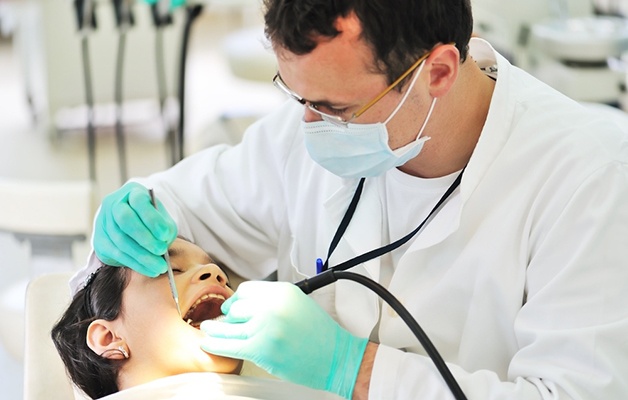
The following paragraph stood out starkly in a recent DentistryIQ article:
“Keeping patients active is one of the biggest challenges faced by practices. Today, people are busier than ever, and fewer of them have dental insurance. Patients will frequently refuse to schedule their next hygiene appointment while in the office, and if they do schedule, they cancel or fail to show.”
At first blush, this sounds like a business challenge facing dentists. And, in fact, that’s the thrust of the DentistryIQ article, which goes on to offer dental offices several tips for helping increase scheduling rates in order to “meet growth goals.”
But there’s more to the situation described than a decline in dental office revenue. The article cites a Levin Group Data Center study that found “only 17% of dentists said most of their active patients receive hygiene treatment every six months.” And that means the overwhelming majority of Americans aren’t receiving their recommended semiannual dental cleaning and examination.
Why aren’t we making and keeping our appointments?
There are at least three major reasons why this commonly recommended preventive care just isn’t happening:
- Fewer Americans have access to affordable dental insurance.
- Out-of-pocket cost for dental care continues to rise.
- It’s often not a high priority unless there is an urgent need.
The national healthcare debate is ongoing, and no one really knows what the future holds as far as government intervention in the insurance industry. But, even when medical insurance in the United States was considered more stable and more affordable, dental insurance often lagged behind in membership as well as the scope of coverage.
As with all other healthcare costs in the U.S., the cost of general, preventive dental care has risen sharply year over year, with no end in sight. The latest figures place the average cost at “$80 to $175 for a routine cleaning performed by a dental hygienist (an average of $127) and anywhere from $114 to $320 for a complete teeth cleaning appointment that typically includes dental X-rays and an exam by a dentist (an average of $198),” with the ranges being primarily based on geographic region.
"A Levin Group Data Center study that found only 17% of dentists said most of their active patients receive hygiene treatment every six months."
This is troubling, since it’s long been accepted by oral health professionals that a semiannual cleaning and examination — in conjunction with good habits like daily brushing and flossing — is the best way to maintain oral health and avoid painful and costly issues down the road. Despite most Americans understanding this professional recommendation, the prevailing mindset seems to be, “my teeth aren’t hurting, so it can wait.”
Why that semiannual appointment is so important
First of all, giving a hygienist an opportunity to professionally clean your teeth every six months is valuable because even the most avid brushing and flossing habits aren’t going to be able to remove every microscopic speck of plaque that forms on the surface of your teeth. And even a small amount of plaque that remains on the teeth long enough will turn into tartar (or calculus) which your toothbrush won’t be able to remove.
Eventually, even with the best self-care habits, your teeth will begin to discolor and weaken under a layer of biological cement that harbors bacteria harmful to your teeth and gums.
But, at least as important is the examination that goes along with the semiannual cleaning. All the time spent cleaning your teeth provides the hygienist plenty of opportunity to note any visual signs of existing or imminent oral health problems that may need attention. The follow-up examination by the dentist, following the cleaning, (and often in conjunction with x-rays) takes the hygienist’s observations a step further and results in a proposed treatment plan if any issues exist.
But the benefits of the examination go beyond oral health as well. That’s because many serious systemic conditions like high blood pressure, heart disease, diabetes, and some types of cancer, can be effectively diagnosed via oral examination long before they become apparent to the patient or other health professionals.
So, skipping your semiannual dental visit could lead to serious conditions being overlooked or misdiagnosed until they’ve become major issues.
But what about the first two reasons?
Cost still rules the decision for many Americans who would otherwise like to receive a cleaning and exam every six months as they know they should. What options are available to control these costs and save on dental care?
One of the most popular options available for those without insurance is a dental discount program. If you want to be able to provide adequate oral health care for yourself or your family, but cost is a prohibitive factor, we encourage you to explore the Dental Solutions program to make quality dental care more affordable today.

